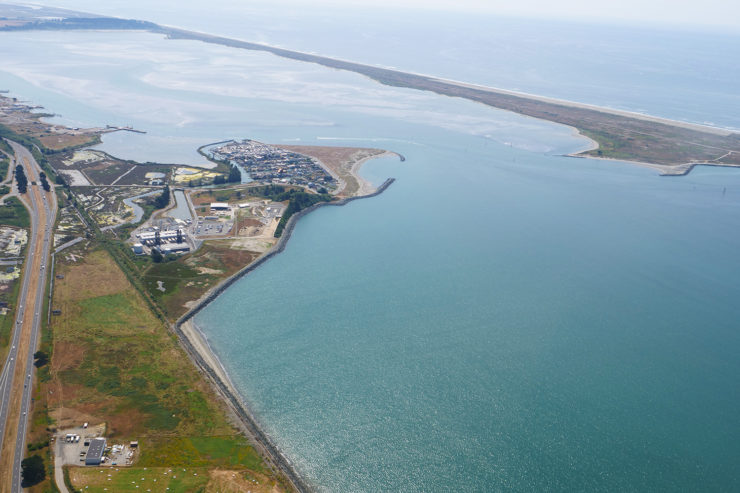The Schatz Center was recently awarded $150,000 from the CA Governor’s Office of Planning & Research to address three elements associated with offshore wind feasibility. Existing research in each of these areas is sparse — and lacks detail specific to the northern California coast:
- Military mission compatibility
- Geologic and seismic challenges
- Localized environmental impacts of a subsea transmission cable
Military mission compatibility: This project will assess the compatibility of offshore wind farms and military operations in northern California, including within the BOEM Call Area for Humboldt. We will be collaborating with the US Navy to understand their operational needs offshore and within Humboldt Bay. Recommendations for increased compatibility may address wind farm design elements including scale, layout, and turbine size.
Geologic and seismic challenges: Mark Hemphill-Haley (HSU Geology) and Eileen Hemphill-Haley (HSU Geology) will assess geologic and seismic hazards in the areas under consideration for an offshore wind farm, undersea cabling, and onshore facilities. In collaboration with ocean engineering experts from Mott MacDonald, we are conducting a geotechnical feasibility analysis to identify challenges associated with onshore cable landing sites and the different anchor types used for the floating wind platforms.
Environmental impacts of subsea transmission cabling: The energy generated by offshore wind would far exceed the power needs of the north coast. Transmitting energy south to San Francisco would involve either (a) expansion of the current onshore transmission system, or (b) development of a subsea transmission cable. In partnership with ecological consultants at H.T. Harvey, we are conducting a preliminary evaluation of environmental effects associated with subsea cable development. This research will evaluate probable and potential impacts to benthic organisms and other marine life and ecosystems, and identify areas for future in-depth review. Mott MacDonald’s ocean engineering team will provide guidance for subsea cable corridor selection and design.
*Wind study 3 will examine the subsea cable option. We are investigating onshore transmission routes in parallel, as part of wind study 2.
Further reading:
To assess offshore wind feasibility for the northern California coast, we are conducting three complementary studies. Learn more about our offshore wind research…














